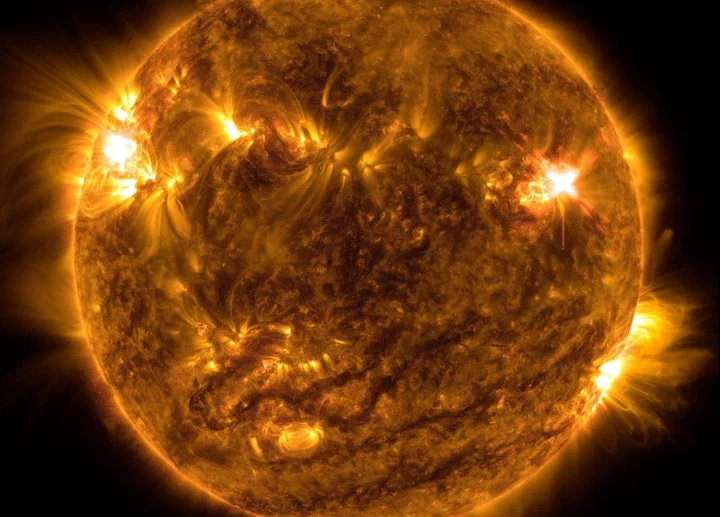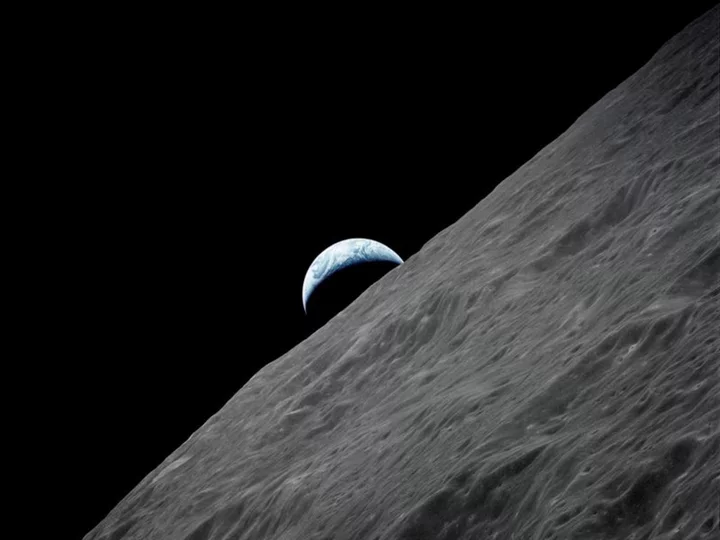Earth hit by powerful ‘X-1’ solar flare, after fears of ‘cannibal’ blast
Views: 3655
2023-08-09 23:59
The Earth narrowly avoided being hit by a “cannibal” solar flare – but has been lashed by powerful enough blasts to disrupt communications. In recent days, space weather forecasters had warned that the Earth could be hit by a range of powerful flares that have been ejected from the Sun. Particular warnings focused on the “cannibal” flare, which was forecast to potentially glance Earth. “Cannibal” solar flares are formed when a later blast catches up with one that was ejected earlier, and consumes it. The energy of the two is combined, which can make them far more powerful than flares that are released on their own. The latest cannibal flare appears to have missed Earth, however. Forecasts had suggested that it was only expected to glance the planet, and so a miss was perhaps likely. The Earth was struck by an X-class flare, however. That is the most potent category of solar flares, and can cause considerable disruption on Earth. This time around, space weather experts warned that the blast was enough to disrupt radio and navigation signals in North America. It was measured as an R3 blackout – on a scale that runs from 1 to 5 – which meant that areas in the US and Canada as well as on the Pacific Ocean were at risk of having radio signals and navigation disrupted. The Sun moves through a cycle of activity every 11 years, during which it releases more and less “coronal mass ejections” or CMEs, and it is currently in a particularly busy part of that cycle. Those CMEs can bring energetic flares that hit Earth – and could one day cause considerable problems on the planet, disrupting energy grids and other important infrastructure. The latest flare was measured at X1.5 and is the 20th such X flare to have hit the Earth in its current period. It came out of a particularly active part of the Sun, and followed other, weaker flares, the UK’s Met Office said. Nonetheless, experts said the “minor ongoing solar radiation storm” was “waning” and that it did not expect significant disruption in the coming days. Read More Giant space ‘umbrella’ tethered to asteroid could protect Earth from climate crisis James Webb Space Telescope captures new images of the Ring Nebula Massive solar storm strikes Earth, Moon and Mars together for first time in history

The Earth narrowly avoided being hit by a “cannibal” solar flare – but has been lashed by powerful enough blasts to disrupt communications.
In recent days, space weather forecasters had warned that the Earth could be hit by a range of powerful flares that have been ejected from the Sun. Particular warnings focused on the “cannibal” flare, which was forecast to potentially glance Earth.
“Cannibal” solar flares are formed when a later blast catches up with one that was ejected earlier, and consumes it. The energy of the two is combined, which can make them far more powerful than flares that are released on their own.
The latest cannibal flare appears to have missed Earth, however. Forecasts had suggested that it was only expected to glance the planet, and so a miss was perhaps likely.
The Earth was struck by an X-class flare, however. That is the most potent category of solar flares, and can cause considerable disruption on Earth.
This time around, space weather experts warned that the blast was enough to disrupt radio and navigation signals in North America. It was measured as an R3 blackout – on a scale that runs from 1 to 5 – which meant that areas in the US and Canada as well as on the Pacific Ocean were at risk of having radio signals and navigation disrupted.
The Sun moves through a cycle of activity every 11 years, during which it releases more and less “coronal mass ejections” or CMEs, and it is currently in a particularly busy part of that cycle. Those CMEs can bring energetic flares that hit Earth – and could one day cause considerable problems on the planet, disrupting energy grids and other important infrastructure.
The latest flare was measured at X1.5 and is the 20th such X flare to have hit the Earth in its current period. It came out of a particularly active part of the Sun, and followed other, weaker flares, the UK’s Met Office said.
Nonetheless, experts said the “minor ongoing solar radiation storm” was “waning” and that it did not expect significant disruption in the coming days.
Read More
Giant space ‘umbrella’ tethered to asteroid could protect Earth from climate crisis
James Webb Space Telescope captures new images of the Ring Nebula
Massive solar storm strikes Earth, Moon and Mars together for first time in history









